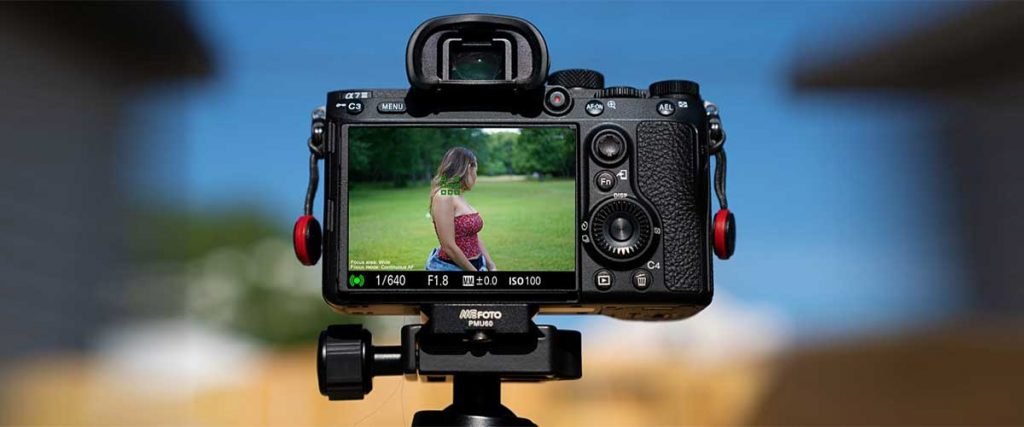Image stabilization technology has revolutionized how we capture images and videos. It allows us to shoot in more difficult environments without worrying about camera shake or vibration ruining our shots. With image stabilization, we can effectively reduce the amount of blurriness in our photos and videos by compensating for movement. This makes it an invaluable tool for any photographer or videographer who wants to create sharp, high-quality images and videos.

This article will discuss the basics of image stabilization and how it can help you improve your photography and filmmaking skills. We’ll also provide tips on getting started so that you can take advantage of this amazing technology. So if you’re ready to take your photography and video production to the next level, let’s get started!
Basics of Image Stabilization Technology
Image stabilization technology is a type of technology that helps reduce the effects of camera shake. It is usually implemented in digital cameras, lenses, and image sensors to counteract shaky movement during image capture. Image stabilization can be achieved through either optical or digital methods depending on the camera model and lens design.

Optical image stabilization uses physical components such as gyroscopes or vibration dampers to reduce camera shake while shooting. This method works by mechanically adjusting the position of the lens elements in order to compensate for any shaking movements made by the photographer’s hand when taking a photo. Digital image stabilization works differently since it relies on software algorithms to digitally adjust images after they have been captured in order to minimize blurring caused by camera shake.
Image Stabilization: Pros and Cons of Using It
Pros
- Helps reduce image blurring and shake, providing sharper images
- Allows for the use of a slower shutter speed without producing blurry images
- Can be used in low light conditions to capture images that would otherwise be too dark or noisy
- Automatically compensates for camera movement and vibration, providing steady shots even when shooting handheld
Cons
- Can increase noise levels in some cases due to increased ISO settings needed to compensate for slow shutter speeds
- Requires additional power and can reduce battery life in certain types of cameras
- Not all lenses have built-in stabilization hardware, so lenses with this feature may be more expensive
- Can reduce clarity in some cases due to digital processing algorithms attempting to stabilize images.
Types of Image Stabilization Technologies
Image stabilization technology is used to minimize the effects of camera shake and vibration. Several image stabilization technologies are available today, including optical, digital, and sensor-shift stabilization
1. Optical image stabilization
Optical image stabilization (OIS) uses a series of lenses to shift the image plane to compensate for any camera movement. This image stabilization works best for still images and videos in low-light conditions.
2. Electronic Image Stabilization
Electronic Image Stabilization or Digital image stabilization (DIS) uses software algorithms to detect movement in the scene and compensate for it in real time. This technique is used mainly for video recording, which can lead to a smoother output with less blurriness.
3. Sensor-shift image stabilization
This technology relies on a mechanical system to move the sensor within the camera body. This type of stabilization is used mainly in cameras with larger sensors, as it offers more precise adjustments for greater accuracy and stability. This technology is also best suited for photography since it allows photographers to capture sharp images even when shooting handheld.
Overall, image stabilization technologies provide users with sharper and more detailed images. While optical and digital stabilization is most commonly used in cameras, sensor-shift stabilization is gaining popularity due to its ability to provide greater accuracy and stability while shooting handheld. Each type of image stabilization technology has advantages and disadvantages, so it’s important to choose the type that’s right for you and your photography needs.
How to use Image Stabilization?
To use image stabilization, simply switch on the feature before shooting. The camera’s software will then activate built-in sensors that detect hand movements and compensate for them by shifting the internal lens elements to keep your shots steady. If you use a DSLR with an interchangeable lens, some lenses also have optical image stabilization (OIS) systems built into them, which work similarly. Using image stabilization, you can ensure sharper images even when zoomed in or shooting in low light conditions without using a tripod.

Image stabilization can also be used in post-production editing software to reduce camera shake further and stabilize an image or video that was taken without the use of a tripod. This is achieved through complex algorithms which analyze the movement of pixels within an image and then apply corrections to correct any motion blur or jittering. Many photo and video editing software include this feature, so it’s worth experimenting with if you want to improve the quality of your footage.
When to turn off image stabilization
When shooting with a camera equipped with image stabilization (IS) technology, it is generally advised to turn off the IS when the camera is mounted on a tripod or other stable surface. This prevents any unwanted camera shaking that could cause blurred images. Additionally, turning off IS can also be beneficial when capturing shots in high-contrast areas, as the lens may not adjust quickly enough to compensate for all the light changes properly.
Furthermore, some cameras may perform better if IS is turned off when taking higher-resolution photos or making larger-sized prints. Ultimately, whether you’re using IS will depend on your preferences and shooting conditions. However, always remember to turn off image stabilization when your camera is mounted on a tripod or other stable surface for the best possible image results.
Conclusion
Image stabilization is an important tool for anyone who wants to capture clear, shake-free photos or videos. Whether you’re a beginner or a professional, understanding how image stabilization works and the different types of technology can help you choose the right gear for your needs. Have you used image stabilization before? What type of results did you achieve? Let us know in the comments below.
